KELT-9b
is a giant planet nearly twice the size of Jupiter, with a dayside
temperature hotter than that of most stars and thousands of degrees
warmer than any known exoplanet, according to a study published Monday
in the journal Nature.
It's
so close to its host star, KELT-9, that it orbits every 1½ days, unlike
the year it takes Earth to orbit our sun. This proximity isn't exactly
kind to it.
The star is
twice as hot and 2½ times more massive than our sun. It's also rotating
50 times faster than our sun -- so fast that its poles have flattened
and the equator bulges out. This makes it the hottest host star of an
exoplanet that we know of, said Scott Gaudi, study author and professor
of astronomy at the Ohio State University.
The
temperature and size would make the star appear light blue to our eyes.
Its temperature puts it in the hottest class of A- and B-type stars.
Due to its incredibly hot, luminous and close star, KELT-9b is being blasted by ultraviolet and high-energy radiation.
This
radiation is causing the planet to evaporate at an unknown rate,
creating a puffy, balloon-like cloud of charged hydrogen and helium
around it. The researchers also believe a comet-like tail trails the
planet as it orbits.
The
planet is tidally locked to its star, like the moon always shows the
same face to Earth. Its dayside would look orangeish, so hot that
complex molecules can't stay together and only 2,000 degrees cooler than
our sun. If you poured water on the surface, it would immediately
disassociate into oxygen and hydrogen, Gaudi said.
The
nightside would be the dark red of a red dwarf star, mostly because it
wouldn't be able to properly redistribute the energy from the dayside.
As
if this planet weren't strange enough, it also orbits perpendicular to
its star, traveling around the star's poles rather than the equator. The
researchers also believe that the orbit is like that of a top, getting
closer and closer.
KELT-9b
isn't on a kind trajectory. Its star, already a couple hundred million
years old, will run out of the hydrogen energy source at its core in 300
million more years. After that, it will expand to three times its size,
cool and slow down.
If
the planet is evaporating at a high rate, all that may be left after
the star cools is a rocky core, which the researchers believe to be at
the heart of all giant planets. This is the less likely outcome, Gaudi
said.
More likely is that as the star grows in size, it will swallow the planet and become enhanced by its lithium content.
Either
way, whether it evaporates or is eaten whole, it isn't a pleasant end
for KELT-9b. "At no point did this planet have a nice life," Gaudi said.
Because KELT-9 is so
bright, Gaudi is confident that observations from space telescopes like
Hubble, Spitzer, TESS and, eventually, the James Webb Space Telescope
could reveal more about this strange system.
The
researchers want to learn more about how atmospheres of planets work
under such incredible conditions, as well as the true nature of its odd
orbit.
They
also believe that something else, whether a planet or a star, is in the
system. KELT-9b most likely formed farther out from its star, but a
violent interaction with something else threw it into a close orbit.
KELT-9b
was discovered by one of two KELTs, or Kilodegree Extremely Little
Telescopes. Jointly operated by Ohio State, Vanderbilt and Lehigh
universities, they are placed in the north and south hemispheres and
designed to look at millions of bright stars at once.
Gaudi
and the team of researchers think this highlights an important aspect
of exoplanet discovery, one that has nothing to do with habitable
planets.
"I think it's
important that we don't lose sight of the larger context in the search
for potentially habitable planets," he said. "That is an important
endeavor but should take place in the context of understanding how
planetary systems form. KELT-9 isn't telling us anything about life.
"We're trying to see what's up there at the very hottest massive
stars that are the most rapidly rotating and see what planets are like
around there. All of this goes to show that Mother Nature is way more
imaginative than we are. And anytime you find something this weird, it
broadens your horizons of what nature can possibly be like."
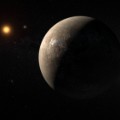

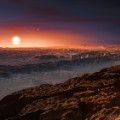


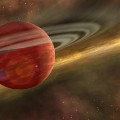

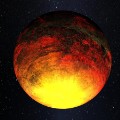

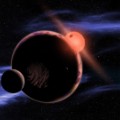
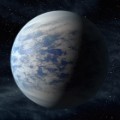
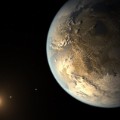











No comments:
Post a Comment